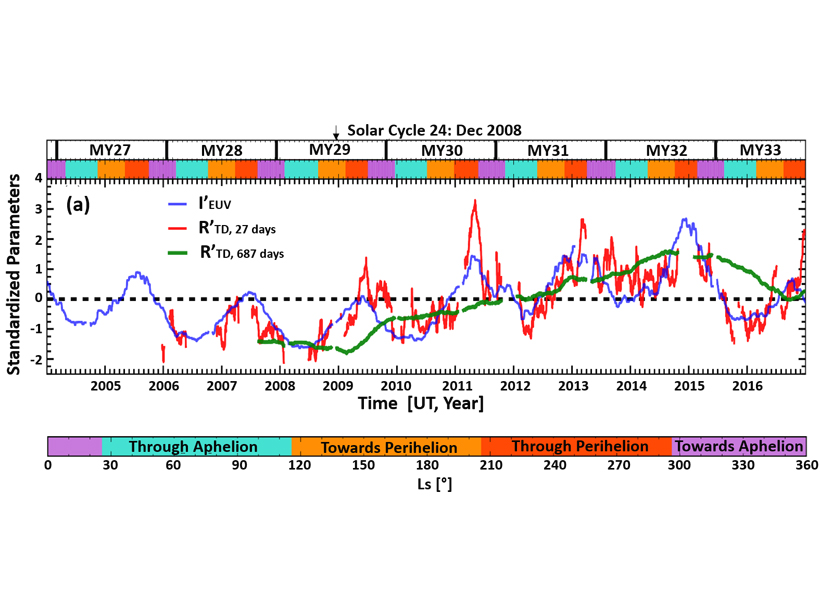Source: Journal of Geophysical Research: Space Physics
Every planet with an atmosphere or magnetic field has a “bow shock,” a boundary at which the supersonic solar wind suddenly slows down so it can be diverted around the planet. At Earth, the main controlling factors for the location of this bow shock are properties of the solar wind, especially its speed. Mars has an atmosphere but does not have a strong internal magnetic field, so this boundary is quite close to the planet.
By examining 11 years of bow shock crossings by the Mars Express satellite, Hall et al. [2019] reveal that the solar flux of extreme ultraviolet light, the photons responsible for ionizing the planet’s upper atmosphere, is an equal contributor to the solar wind flow parameters for controlling the location of the bow shock at Mars. Properties of the solar wind are important on short time scales, but this influence is superimposed on a longer-term variation governed by the expansion of the neutral atmosphere from EUV heating and ionization.
Control of the bow shock by the solar EUV flux is completely negligible at Earth, revealing a key difference between the space environments of these two neighboring planets. This finding should to be taken into account when interpreting other observations around Mars, in particular planetary atmospheric loss to deep space.
Citation: Hall, B. E. S., Sánchez‐Cano, B., Wild, J. A., Lester, M., & Holmstrom, M. [2019]. The Martian bow shock over solar cycle 23–24 as observed by the Mars Express mission. Journal of Geophysical Research: Space Physics, 124. https://doi.org/10.1029/2018JA026404
—Mike Liemohn, Editor in Chief, JGR: Space Physics
Text © 2019. The authors. CC BY-NC-ND 3.0
Except where otherwise noted, images are subject to copyright. Any reuse without express permission from the copyright owner is prohibited.

